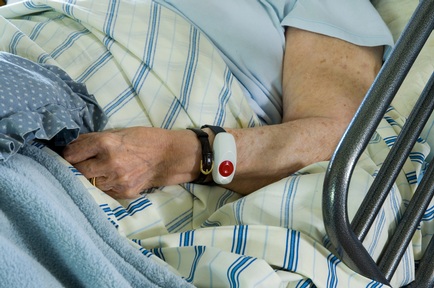Old age of care home owners threatens sector's future in Wales
Half of the care home providers in Wales, who were asked, admit they are looking to leave the market, chiefly because they are getting old, the Public Policy Institute for Wales (PPIW) reports.

With many of the owners of single homes reaching retirement age, the Welsh care home sector is facing a question mark over future provision according to the PPIW report 'The Care Home Market in Wales: Mapping the Sector'.
While care home owners retire, prospective new entrants to the market are being put off, according to the PPIW.
Providers and estate agents admitted that between five and 15 years ago, Wales was an attractive market for investors in care homes but high capital costs have made the sector a less attractive proposition.
An estate agent specialising in care home sales said new investors were often based in London and were not owner managers.
With access to finance, London investors can put down large deposits, however lower fees in Wales than in England make it less attractive to invest in Wales.
One provider in Wales said: “The infrastructure in Wales does not support development. We will not acquire any more homes in Wales…we would not invest in Wales if we were starting from scratch now. We will expand in England.”
According to the PPIW report, while 69 new care homes registered between 2012 and 2015, a total of 99 care homes shut down.
The report said: “In our interviews, a South Wales housing association was the only provider we spoke to that were definitely planning to expand their portfolio of care homes in Wales.”
Most providers said increased pressures across almost all areas of spending including utilities, staff wages, plus the changing needs of residents had not helped the sector.
Providers said the market was tougher now as a result of shorter stays by residents who had much higher needs than five years ago.
“Five years ago most of the residents at a nursing home could eat their own dinner, walk at least a short way and take themselves to the lavatory. Now hardly any patients in a care home can do that.
“Most require two members of staff to help them wash etc. The number of care staff needed has doubled. Nursing homes are becoming more like hospices”.
The homes need more staff for each resident to cater for the greater level of care they require. There is also a high cost of turnover which includes the cost of each vacancy, redecorations and any additional support needed for the new resident.
The report said fixed fees by local authorities are not always adjusted as needs increase “unless the care home serves notice on the resident concerned”.
Some local authorities have recently built extra care housing (also known as housing with care) or are in the process of having it built as a result of Welsh Government funding. They are keen to get want more extra care housing, regarding it as a desirable alternative to residential care homes.
The report recommended the Welsh Government "publish a strong message" about the significance of the care home market in Wales and make a central commitment to promote a mature market and manage risk effectively.
It also recommended the Welsh Government develop a national standard contract between local authorities and private providers and consider national policy guidance on fee-setting.
The report also found that as of April this year, there were 22,706 beds across Wales in 673 care homes, with the number of beds split almost equally between nursing and non-nursing care homes.
Almost a third (29 per cent) of the care homes operating in Wales have an organisation based in England running the home.
Latest News
 29-Jul-24
Dementia Bus gives carehome.co.uk staff insight into life with dementia
29-Jul-24
Dementia Bus gives carehome.co.uk staff insight into life with dementia
 01-Mar-24
Find out the top care homes in 2024
01-Mar-24
Find out the top care homes in 2024
 21-Mar-23
UK's top care homes in 2023 revealed
21-Mar-23
UK's top care homes in 2023 revealed
 03-Jan-23
carehome.co.uk launches free care helpline
03-Jan-23
carehome.co.uk launches free care helpline
 13-Dec-22
5 mins with Emily Whitehurst, chief operating officer for Constantia Healthcare
13-Dec-22
5 mins with Emily Whitehurst, chief operating officer for Constantia Healthcare